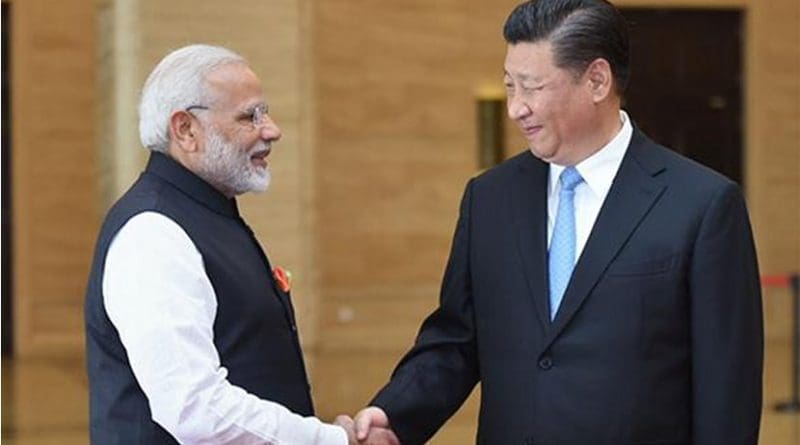Sino-Indian Atmospherics And The Wuhan Summit – Analysis
By IPCS
By Dr. Siwei Liu
The Xi-Modi summit in Wuhan in the end of April has drawn much attention in the international community with some claiming it may prove a turning point in Sino-Indian relations. Its significance however lies in transforming the overly emotional atmosphere that plagues Sino-Indian relations currently by creating bonding and therefore direct lines of communication between the two top leaders, acting therefore as a circuit breaker. Indeed, influencing the interaction between the two countries is not only security or economic issues but rather the unobserved and often neglected ‘atmosphere’ which can get bogged down in negativity or generate false hope from excessive positivity. This intangible emotion must be recognised and the relationship must be insulated as emotions (both positive and negative) are corrosive when they start affecting one of the most pivotal relationships of the 21st century.
Emotions generated, usually in the public sphere, determine which of the many adjectives one uses to describe the India-China relationship get prioritised, frequently ignoring the others; friendly neighbours, indifferent neighbours, strategic partners, potential adversaries, potential partners or strategic competitors. It is worth noting that such emotions are almost always generated by some specific event. For example, in 2017 the China India border standoff created a strain that affected all other spheres of the bilateral relationship. In this background, an increasing number of people from both sides begin to take a dim view of the ties trying to bracket a multifaceted relationship into just one issue. This casts the two big neighbours as competitors, or worse, a future enemy, scoring own goals for their respective side. Similar creation of a negative atmosphere was observed during India’s NSG membership application, and during the revival of the “Quad” comprising the US-Japan-India-Australia. While such negative descriptions may be accurate in describing the situation at hand, they affect a disproportionately negative influence on other spheres where the relationship may in fact be in solid ground. Similarly excessive optimism can also dull one side to extant problems on other fronts. Mostly negative though, China-Indian ties in the last two years have been faltering.
Fortunately, the Wuhan informal summit was a timely circuit-breaker for the growing tension between the two neighbours. It is reported that the two top leaders held a total of seven meetings totalling nine hours of face time, including four “one-to-one” meetings, as well as boat trips, walks, tea tasting and museum visits. Though no agreements were signed and no joint document was issued, these bonding exercises sent a positive message, that is China and India are still neighbours with more to gain from each other than lose.
Admittedly, Sino-Indian relations are complex. Any one-sided emphasis is not appropriate. In reality the competition between two Asian big powers is inevitable. There is no doubt that with both sides conducting periphery strategic expansion, there will be a further increase in overlapping areas of interest between the two Asian giants. That requires the two sides to view the increasing competition in an objective and sensible way. Given that the present international and regional environment is full of uncertainty, risk, and crisis, the two countries feeling insecure and being more sensitive to each other’s policy adjustments is essential. So, constructing a positive emotional atmosphere insulating fact from feeling and interest from emotion, through Wuhan-style, informal tête-à-têtes is particularly necessary.
If possible, the two countries should establish an “informal summit” communication mechanism. This should not just be of the top leadership but across the levels of government that come in contact with each other, so that the circuit breaker of personal knowledge and the ability to reach out for clarifications does not get affected by news cycles. Not only that, the two sides should pass the positive emotions through carrying out more in-depth people-to-people contact. This can be augmented by joint initiatives to tackle global challenges such as deflation, natural disasters and terrorism, increase the representation and voice of developing countries and emerging market countries on the international stage, and so on so forth. The two sides also can step up the “strength” cooperation mentioned by Prime Minister Modi, namely spirituality; tradition, trade and technology; relationship; entertainment (movies, art, culture etc.); nature conservation; games; tourism; and health and healing. In a word, both sides must always remember that all talk and no action may bring more disappointment and dissatisfaction which will worsen ties between the two Asian neighbours.

